Software Is The CNC
Imagine a computer numerical control (CNC) system set free of proprietary hardware. Two shops discuss their experiences with software-based machine controllers.
Share







Hwacheon Machinery America, Inc.
Featured Content
View More
The controller was as good as dead. The machine it was on couldn't even be traded in.
Almost every long-standing shop has had a machine like this—good iron but the controller is shot. The difference is that Melling Manufacturing Group in Jackson, Michigan, was able to bring their vertical machining center back to life. And it didn't take an expensive maintenance program. All it took was replacing the old hardware-based CNC with a software-based system, running on a mail-order personal computer. This PC control not only resurrected the machine tool, but it also lets the machine run better than it ever did with the old controller.
"The way it was, the most we could get for that VMC as a trade-in was its scrap value," said Melling President Dave Horthrop. This 45-man shop had owned the machine since 1985, and relied on it for years. But over time, the control unit had experienced its share of problems, with downtime getting longer and longer and repair bills going higher and higher. Even when it was running, the machine was very difficult to program. The proprietary control was badly outdated and no longer supported by the builder.
"Eventually it got to the point where, at best, we could use it only as a programmable drill press. Even at that, our machinists avoided using this machine as much as possible—most of the time it just took up valuable floor space," Mr. Horthrop recalls.
The shop found the new CNC, which made the turnaround possible, a little over two years ago. Called OpenCNC and produced by Manufacturing Data Systems Inc. (MDSI) of Ann Arbor, Michigan, this CNC is a software-based system that uses a standard, off-the-shelf personal computer (PC) running a standard CNC software product. Only this software is proprietary; everything else is entirely independent of computer hardware. As soon as the old CNC was replaced with the new, this same machine was running, and running at faster feed rates and better accuracies than it did when brand new. It has become a very productive resource on the shop floor and there is no hesitation among operators when they are assigned to this machine.
"Besides turning what we thought was just a piece of junk into a valuable production asset, software-based CNCs are going to help us get into a new business that we couldn't otherwise compete in," says Mr. Horthrop.
A Different Kind Of CNC
Mr. Horthrop had heard about the new kind of CNC from Great Lakes Industry, Inc., a company also located in Jackson, near Ann Arbor in the southeastern corner of the state. GLI had retrofit several of its machine tools with these software-based CNCs. Almost out of desperation, Mr. Horthrop visited GLI to check it out. What he saw appeared to be the answer to the problems with his shop's VMC, even though the retrofit CNCs he looked at were radically different from the CNCs he was used to encountering. With little to lose, he had the old CNC replaced on the VMC in August, 1995.
The new CNC runs on an office-grade PC interfaced directly to the existing servo system of the machine tool. There is no separate motion control card, programmable logic controller, or other hardware in or attached to the PC. It has standard processors inside, exactly the way it came out of the box.
What it does have is software designed and written to allow an off-the-shelf PC to function as a CNC. This software handles everything that a CNC normally handles, such as the human-machine interface and I/O control, but it also closes the servo loop, a task usually relegated to add-on hardware such as a motion control card in some CNCs using a PC platform.
The reason Melling's VMC is now performing better than ever is that the old control did not have the processing power to keep up with the full potential of the axis drives on this particular machine. The drives' speed and accuracy were limited by the inability of the old CNC to process motion commands and position feedback signals very quickly. The new CNC is considerably faster.
"And when faster and more powerful PCs become available, we can upgrade by simply swapping out the old for the new," notes Mr. Horthrop. "The same control software will be loaded on the new PC. Likewise, if the control software is upgraded, the hardware will not prevent us from moving to the new version."
Hardware Independence
Having CNCs that are completely independent of hardware is an important consideration for both Melling and GLI, though their reasons are different. "We are interested in adding capacity to manufacture timing sprockets and similar workpieces for our parent company," explains Mr. Horthrop at Melling. "But we can't justify the cost of new equipment to produce these parts competitively in a mature market where margins are very low. The problem with used equipment is the controllers. They're either outdated to start with or if they're not, getting repair parts or future upgrades may not be easy or affordable."
At GLI, a company well established as a supplier of gears and sprockets to the construction and farm implement industry, keeping older machine tools running was the problem. "At the beginning of 1993, all of our CNC machine tools still had conventional CNCs, most of them the original units provided by the machine builder," explains Don Werner, GLI's vice president and general manager. "A lot of this equipment was more than 10 years old and downtime due to control unit failures was becoming unmanageable," he recalls. "We didn't know one day to the next which machines would be running because of controls having a bad board or waiting for a replacement component. Not only were we scrambling to meet delivery dates for customers, but repair bills were costing us thousands of dollars with each fix."
Both Melling and GLI now see software-based CNC retrofits as the answer. Says GLI's Don Werner: "We're replacing old control units when they go bad on existing machines and we're looking for good buys on used machines that we can upgrade with new CNCs ourselves." According to Mr. Werner, GLI has replaced control units on 16 of its machine tools, including lathes, milling machines, and a gear hobber. All of these machines now have MDSI's OpenCNC as their unbundled, software-based controls. In each case, the new hardware consists of 486- or Pentium-grade personal computers purchased from a PC mail order house, the same one that supplies PCs for the company's office applications.
Melling is now purchasing used machines and plans to buy seven to ten next year. "We're about to retrofit the first of these machines, a Warner & Swasey 1SC," Mr. Horthrop reports. "Counting its purchase price and the cost of the new CNC software and PC hardware, we'll spend about $25,000 to $30,000, as opposed to four times that much for a new machine. And that investment is less likely to be jeopardized by problems with proprietary control hardware."
What's In A Name
When GLI retrofit its first software-based CNC in mid-1993, MDSI, the company that provided it, went by the name of Software Algorithms, Inc. This original name reflected the core technology from which its products would spring, but the new name reflects an historical background that is equally significant.
Anyone who has been around NC or CNC machine tools for over ten years or so will probably recognize the MDSI name. The original MDSI, also located in Ann Arbor, was founded in 1969. Two of the co-founders were Bruce Nourse and Chuck Hutchins. They developed Compact II, an NC programming language that simplified writing NC programs. Programs written in Compact II could be transmitted to MDSI's mainframe computers for processing. MDSI sent back code representing the corresponding tool path data, which a shop could then use to machine workpieces on its own NC equipment. This arrangement was called timesharing, and it is how a great number of machine shops handled NC programming when they first got their start in NC machining.
The original MDSI was acquired by Schlumberger in 1980. Schlumberger also acquired Applicon, an early developer of CAD/CAM software, and merged the two. The MDSI name eventually was dropped. In the meantime, timesharing was gradually phased out as affordable stand-alone computing systems combining low-cost hardware with high powered software became available. (Today's generation of personal computers, of course, represents the ultimate result of this trend.) Meanwhile, language-based programming systems such as Compact II have been superseded by graphical programming software running on PCs or workstations.
Bruce Nourse and Chuck Hutchins did not disappear, however, and neither one forgot their vision for how computers could ultimately change manufacturing. Their early work with timesharing computers and programming software helped create a new era in manufacturing, an era in which unprecedented levels of automation and productivity changed the very nature of what a machine tool could do. Although numerical control revolutionized machining, it left the individual machine an island of automation nevertheless. But Mr. Nourse and Mr. Hutchins saw a future in which machine tools "would become on-line peripheral devices controlled in real-time by PCs on the company-wide network."
With that future in mind, they got back together to found Software Algorithms, Inc., in 1989. Eventually, SAI would re-adopt the MDSI name, although there is no other corporate connection with the original company. But the goal of changing manufacturing with computers was a legacy that the founders did preserve. More specifically, they envisioned unbundled software systems, not special electronic hardware, controlling machines and production just as PCs control other operations of a manufacturing business. So Mr. Nourse and Mr. Hutchins set out to develop this unbundled machine control software, while holding the notion that it would serve as the software foundation upon which their vision for the factories of the future could be realized.
In practical terms, that means developing algorithms that a standard PC processor such as an Intel 386 or 486 can execute in real-time to handle the demanding motion control functions required by machine tool applications. These algorithms are necessary to allow software to close the servo loop effectively, and they are the key to hardware independence.
Special Algorithms
Closing the servo loop is a function that a control system must repeat hundreds of times each second as it executes motion commands. Essentially, this function is performed by software routines, or algorithms, that compare position feedback signals (where a machine axis is actually located at any given moment) with the axis position defined by the motion command (where the axis position should be) and adjusting servo signals until commanded and actual position match. The match is never absolutely perfect, and the difference is known as "servo lag." The speed and precision with which any CNC makes this match minimizes servo lag and thus determines the accuracy and efficiency of a machining operation.
The first CNC systems were designed with specialized hardware and software because there were no standard or off-the-shelf computer products suitable for the unique requirements of machine tool control. Over the years, control builders have made remarkable strides in improving the speed, capability, memory, and ease-of-use of these specialized computer systems. Typically, control builders developed their own technology for CNCs, and these proprietary systems were generally quite different from builder to builder.
The drawback to specialized, proprietary hardware and software, however, is that they are "closed" to the end user. Changes to this hardware and software can be made only by the control builder. End users are locked into this builder for repair parts or software updates. Useful information about machining processes also may be "locked" inside the control, where it cannot be accessed by a communications network.
Recently, personal computers have been applied to computer numerical control to overcome these limitations, at least to some degree. One approach is to interface a PC to a proprietary system and let the PC communicate with the operator and/or run additional software from other vendors. The PC portion of these control systems does open up some choices for the user, but the proprietary components remain closed.
Another approach is to eliminate as much proprietary hardware as possible and rely on the PC for performing most CNC functions. Unfortunately, the typical PC does not have standard processors with the speed and power for performing certain motion control algorithms such as those that close the servo loop. The way around this limitation is to install a customized printed circuit board with additional processors for these high speed functions.
This added hardware is commonly called a motion control card. The most advanced designs use digital signal processors with built-in special-purpose software, called firmware, that cannot be changed by the user. Because the rest of the system is essentially a standard PC, costs are low and most of the standard PC components will be readily available commercially. Only the motion card itself may be limited, in its availability from commercial sources, in its interchangeability with other motion cards, and in its capacity to be modified by the user for special purposes.
According to Jim Fall, VP of marketing at MDSI, the developers at MDSI looked at this approach from another angle. If the motion control algorithms cannot be performed fast enough by standard PC processors, then changing the algorithms might be a solution. That would eliminate the need for specialized add-on software and hardware. "What Bruce Nourse and his partners at MDSI did is write new algorithms and invent ways for a standard processor to use them in a very efficient manner," recounts Mr. Fall. "These algorithms are at the heart of MDSI's control software."
It took four years to develop and test these algorithms and solve certain other design challenges. In mid-1993, the first OpenCNC system was installed in a production environment. This test machine was located at Great Lakes Industry.
Real-Time Operating System
Jim Fall also explains that MDSI's OpenCNC differs from many other PC-based CNC systems in another important way. OpenCNC does not run on DOS or Windows operating systems. "These are not true real-time operating systems, although in most office or home applications that is not a critical requirement," Mr. Fall Says. "On a machine tool or other piece of production equipment, real-time capability is essential because it makes the system extremely reliable."
OpenCNC uses the QNX operating system, which was developed for real-time applications, such as nuclear power plants. A characteristic of this operating system is its stability. Mr. Werner at GLI, who has the most experience with OpenCNC, reports that he has never once had a "system crash" on any of the 16 machine tools equipped with these controls, in four years. Some of these machines run 20 hours a day, 6 days a week.
Real-time tasks such as linear and circular interpolation, cutter radius compensation, velocity feed forward (look-ahead), and feed rate override also are handled by the software.
Although QNX is not Windows, it features pull-down menu panels and other features that make the graphical user interface easy to navigate. Displays can be configured by the user and a touch screen feature allows the user to go quickly from screen to screen and select settings or view data. The touch screen allows the monitor to display all of the required functions for machine control. OpenCNC also features an open Application Programming Interface, allowing users to add functionality, customize the controller, or integrate with third-party applications.
The ability to run Windows or MS-DOS applications on a CNC using personal computer technology is an attractive feature to many shops. According Mr. Fall, MDSI is currently evaluating three products that will provide real-time extensions to Windows NT for OpenCNC, and the company will probably support all three. In the meantime, Don Werner at Great Lakes doesn't see QNX as a disadvantage.
"The price of a PC is so low today that if we need to run a PC application on the shop floor, we don't need to do it on the machine tool's computer," Mr. Werner says. "In fact, before software-based CNCs came along, we had PCs at key workstations or cells and we run shop scheduling and other Windows applications on those computers now."
Do-It-Yourself Retrofits
For both Melling and GLI, one very attractive aspect of software-based CNC is being able to replace the existing CNC in their own shop, using their own personnel to do the job.
At Melling, for example, the control on the VMC was replaced by Tom Foster, who runs the milling department there. He did the retrofit himself, using about three weeks of spare time during August of 1995. The job entailed taking out the old control panel as well as replacing the PLC with a digital I/O rack. A new power supply was also installed. Otherwise, the existing servos and servo amplifiers were left alone.
Because MDSI's OpenCNC is hardware-independent, Mr. Foster could use any suitable PC from any retail source. In this case, the PC came from CompUSA. It is a Compudyne model with Pentium 90 processors and 8 MB of RAM. The system unit (the putty-colored box containing the PC motherboard, memory boards, processors, and so on) is located in the machine's electrical enclosure, where it is cabled to the axis encoders. Standard connector cables that came with the PC connect the system unit to the monitor and keyboard. The monitor and keyboard now sit in the old control unit's pendant.
Software for this CNC was installed from a set of diskettes, and that is how upgrades would be handled, too. Likewise, if hardware is upgraded, existing software would transfer just as readily.
At Great Lakes Industries, PCs are installed on the machine tools in a similar fashion. Because GLI was the first shop to install MDSI's OpenCNCs and served as a test bed for the developers, GLI had more hands-on help from them with the earliest systems installed. After that, retrofits have been implemented in-house. The exception is any new type of machine that MDSI has not encountered before.
In that case, GLI works with MDSI, who writes the modules needed to handle the new machine. (After the new software is proven out, it becomes available to other MDSI customers.) The outstanding example of such a machine handled in this way is a gear hobber GLI acquired used in 1996. This machine, a Bullard Model 450 CNC, was one of only two machines like it that were produced. The machine was not operational because the control unit did not work. To most shops, a machine in this condition, even at a tenth of its original price, would be no bargain.
For GLI, Mr. Werner points out, the dead control was "no big deal" because they were confident that a software-based CNC could take its place and bring the machine back to life. And so it could. MDSI created the software modules to handle the unique functions required by a gear hobber, and this machine has been in production ever since. "A machine that cost us $50,000 is doing the work of new machine that would cost upwards of $750,000," calculates Mr. Werner. A bargain indeed.
"One of the beauties is, the new CNC on this gear hobber is like all of the other MDSI controls in the shop," Mr. Werner notes. "Any operator who is familiar with the OpenCNC controls on another machine can easily learn to run this one. Everything is familiar."
Open To The Future
Moreover, all of the software-based CNCs at GLI will retain this uniformity in the future, even though the range of machines on which they have been installed includes lathes and milling machines from numerous manufacturers. All of these new CNCs are linked to GLI's Ethernet shop network by means of standard communication boards inserted in the PC's backplane. In fact, no executive software resides in local memory at each control unit. All appropriate software modules are downloaded from the network file server each day when the operator logs on at the PC monitor.
When MDSI releases new versions of any module, GLI will be able to distribute the new software to every control to which it applies. "We won't be plagued with out-of-date hardware or software," Mr. Werner predicts. In the meantime, his shop is preparing to take the next step of real-time data collection.
As noted earlier, MDSI's founders envision hardware-independent CNCs not as an end in themselves, but as a means of achieving computer-integrated manufacturing, with bi-directional communication of machining processes without operator intervention. According to the company's own statements, "This concept of physical and functional integration of factory equipment with enterprise-wide computing systems requires an `open, modular architecture control' on the machines. The existing proprietary hardware-based controls are the antithesis of openness needed for fully integrated systems."
Software-based CNCs give GLI this openness, so the next step is to use this openness to create a closed-loop SPC (statistical process control) system that captures real-time data from the CNCs on machines, which will be equipped
with touch probe inspection systems. At first, this system will be used to check drilled bolt-hole circles and verify hole size and location. Data from the probes will be uploaded to the network file server and made available to third-party SPC analyzers.
Trends that show tool wear, for example, will be anticipated and operators will be alerted before parts go out of tolerance. Another possibility is changing tool offsets in the tooling databases automatically, thereby compensating for tool wear on the fly.
Because MDSI's CNC software has an open Application Programming Interface, creating this closed-loop system will be relatively straightforward, Mr. Werner believes. "We can capture real-time data about almost any event that occurs in the machine's operation and use this information in many constructive ways," he says. For example, actual cycle times and part counts will be collected and input to the shopfloor scheduling system in real-time without operator intervention. This will give production managers real-time scheduling and capacity planning capability.
Many shops, however, will find hardware-independent CNCs attractive whether or not their plans call for further ventures into computer-integrated manufacturing. Melling is a good example. "Besides the machines we are acquiring for our new sprocket production line, we have already identified a lathe and a machining center we intend to upgrade to software-based CNC," says Melling's Mr. Horthrop. "These two particular machines have been especially productive in our shop, and we don't want their useful lives cut short by CNCs that become out-of-date or hard to maintain. In the future, we don't want any more good machines with dead controls."
Dynamic Times For CNC
Today, CNC technology offers shops and plants more options and choices
than ever before. It is clear that many companies will be changing their direction, based on the new possibilities and opportunities presented by the widening spectrum of this technology. It is impossible to predict where these trends will lead, except toa future in which the control and monitoring of machine tools will be very unlike what we are accustomed to today.
To contact Melling Manufacturing Group, call (517) 750-3580.
To contact Great Lakes Industry, Inc., call (517) 784-3153.
Related Content
Orthopedic Event Discusses Manufacturing Strategies
At the seminar, representatives from multiple companies discussed strategies for making orthopedic devices accurately and efficiently.
Read MoreCutting Part Programming Times Through AI
CAM Assist cuts repetition from part programming — early users say it cuts tribal knowledge and could be a useful tool for training new programmers.
Read MoreCan ChatGPT Create Usable G-Code Programs?
Since its debut in late 2022, ChatGPT has been used in many situations, from writing stories to writing code, including G-code. But is it useful to shops? We asked a CAM expert for his thoughts.
Read MoreERP Provides Smooth Pathway to Data Security
With the CMMC data security standards looming, machine shops serving the defense industry can turn to ERP to keep business moving.
Read MoreRead Next
Building Out a Foundation for Student Machinists
Autodesk and Haas have teamed up to produce an introductory course for students that covers the basics of CAD, CAM and CNC while providing them with a portfolio part.
Read More5 Rules of Thumb for Buying CNC Machine Tools
Use these tips to carefully plan your machine tool purchases and to avoid regretting your decision later.
Read MoreRegistration Now Open for the Precision Machining Technology Show (PMTS) 2025
The precision machining industry’s premier event returns to Cleveland, OH, April 1-3.
Read More



























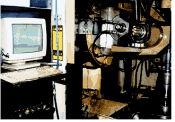

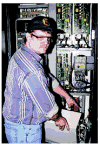
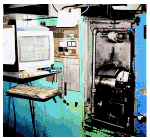
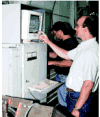
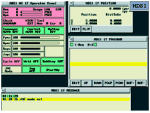






.jpg;maxWidth=300;quality=90)



















